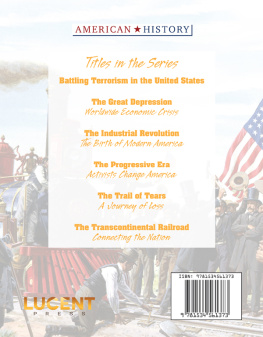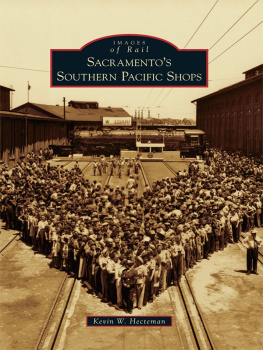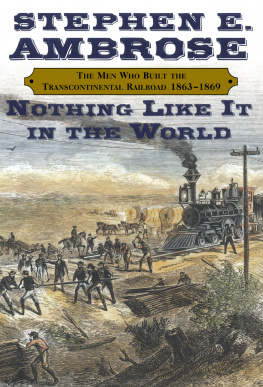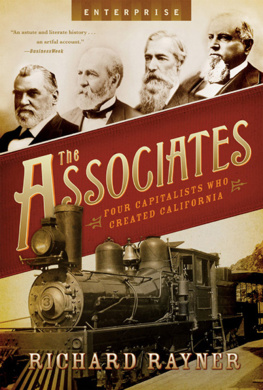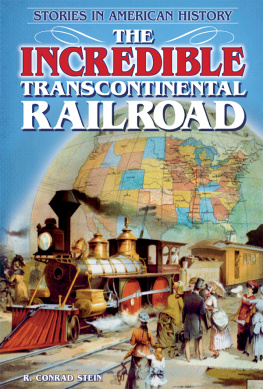Please visit our website, www.garethstevens.com. For a free color catalog of all our high-quality books, call toll free 1-800-542-2595 or fax 1-877-542-2596.
CATALOGING-IN-PUBLICATION DATA
Names: Wittmann, Kelly.
Title: Building the transcontinental railroad: race of the railroad companies / Kelly Wittmann.
Description: New York : Gareth Stevens Publishing, 2018. | Series: The great race: fight to the finish | Includes index.
Identifiers: ISBN 9781538208267 (pbk.) | ISBN 9781538208168 (library bound) | ISBN 9781538208045 (6 pack)
Subjects: LCSH: Pacific railroads--History--Juvenile literature. | Railroads--United States--History--Juvenile literature. | Railroads--West (U.S.)--History--Juvenile literature.
Classification: LCC TF25.P23 W57 2018 | DDC 385.0978--dc23
Published in 2018 by
Gareth Stevens Publishing
111 East 14th Street, Suite 349
New York, NY 10003
Developed and Produced by Focus Strategic Communications, Inc.
Project Manager: Adrianna Edwards
Editor: Ron Edwards
Layout and Composition: Ruth Dwight
Copy editors: Adrianna Edwards, Francine Geraci
Media Researchers: Adrianna Edwards, Paula Joiner, Maddi Nixon
Proofreader: Francine Geraci
Index: Ron Edwards, Maddi Nixon
PHOTO CREDITS
Credit Abbreviations: G Getty; LOC Library of Congress; NARA National Archives and Records Administration; S Shutterstock; WC Wikimedia Commons
Position on the page: T: top, B: bottom, L: left, R: right
Cover: G: Wolfgang Kaehler; : Felix Lipov/S.
All rights reserved. No part of this book may be reproduced in any form without permission from the publisher, except by a reviewer.
Printed in the United States of America
CPSIA compliance information: Batch CS17GS : For further information contact Gareth Stevens, New York, New York at 1-800-542-2595.
CONTENTS
The Passion of Theodore Judah
The Power Players
The Ideas and the Effects
Construction of a Continent
The Last Spike and Lasting Achievement
Timeline
Glossary
For More Information
Index
THE PASSION OF THEODORE JUDAH
On November 2, 1863, a young man lay in a hotel room on Wall Street in New York City, suffering greatly from the yellow fever he had contracted while crossing the Isthmus of Panama. His name was Theodore Judah. Knowing that he stood at deaths doorstep, he must have thought back on his life and wondered where it had all gone wrong.
Wall Street
In the 1860s, Wall Street was the center of Americas financial sector, just as it is today. The business on Wall Street not only affected the lives of all Americans, but the lives of many other people all over the world.
Wall Street was a busy place in 1867.
A HAPPY START
Theodore Judah was born in Bridgeport, Connecticut, on March 4, 1826. He was known as Ted to family and friends. The son of an Episcopal minister, Judah led a fairly privileged life and had the opportunity to get a good education.
This historical postcard shows a view of the harbor in Bridgeport, Connecticut.
AMBITION
Other young men of the Victorian era might have amused themselves with trivial sporting events and parties. But Judah was a serious person who was interested in engineering from an early age. After graduating from Rensselaer Polytechnic Institute, he was in great demand by the railroad companies of the Northeast. However, his ambition was even larger than the opportunities that they could provide.
Queen Victoria and the Victorian Era
Though Queen Victoria was only the ruler of Great Britain and its colonies, the phrase Victorian era is used to describe the period from 1837 to 1901 anywhere in the English-speaking world and beyond. The queens political and personal lives influenced many Americans.
This 1859 portrait by German painter Franz Xavier Winterhalter shows Queen Victoria at about age 40.
A BOLD PLAN
In 1854, the president of the Sacramento Valley Railroad, William Tecumseh Sherman, and his associates summoned Judah to New York City. They told him they wanted him to go to California to help build the Sacramento Valley Line. It would have been much easier and more profitable for Judah to simply stay in the Northeast and continue to build railroads there, but Judahs ambition overcame his doubts. He headed off for the Wild West.
After building the Sacramento Valley Railroad, William Tecumseh Sherman (shown here) went on to serve as a Union general in the Civil War.
CALIFORNIA-BOUND
When Judah went to California, his mind was already racing far ahead of his bosses plans. He knew what he really wanted to do: build the first transcontinental railroad. He made no secret of this plan. Because land travel from the East to California was too time-consuming, Judah and his wife had a daunting journey by boat ahead of them. They sailed south through the Gulf of Mexico and the Caribbean Sea, then headed west through a river in Nicaragua, and then north to San Francisco.
San Francisco
In the 1850s, San Francisco was a rapidly growing boomtown. The California gold rush began in 1848 and caused the population of San Francisco to explode from 1,000 to 25,000 in under a year. Between gold mining and the building of the transcontinental railroad, many businesses were founded to serve the influx of workers, including jeans manufacturer Levi Strauss & Co.
The heavy denim the company used, held together by patented copper rivets, was a big hit with those who did heavy labor.
ON TO THE NEXT DREAM
Building the Sacramento Valley Railroad Line was a huge accomplishment because it was the first railroad west of the Mississippi River. But at its completion in 1856, Judah was eager to get started on his dream project. He began planning for a great Pacific railroad one that would stretch across the entire American West. He was so enthusiastic and loud in his boasting that he became known as Crazy Judah.
The great Pacific railroad, or the Union Pacific, took hard manual labor to complete.
OBSTACLES
One thing that stood in the way of the new railroad was the Sierra Nevada mountain range. Running 400 miles (644 km) north to south and 70 miles (113 km) east to west, the Sierra Nevada seemed insurmountable. Its enormous cliffs of granite had been formed by volcanic activity and glacial cutting over millions of years. But when Judah climbed Donner Pass, he found the answer a place where the Pacific road could safely climb and descend.





